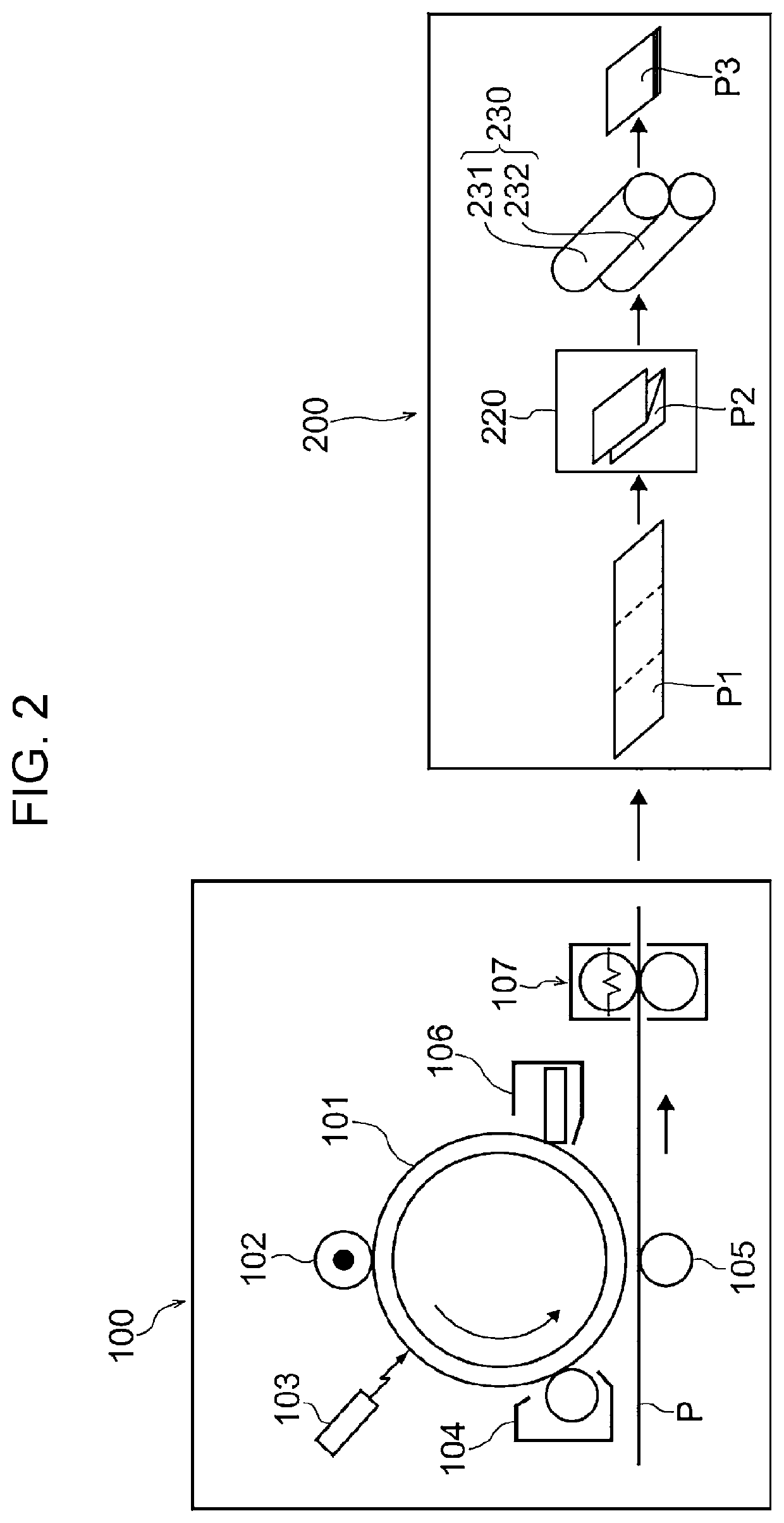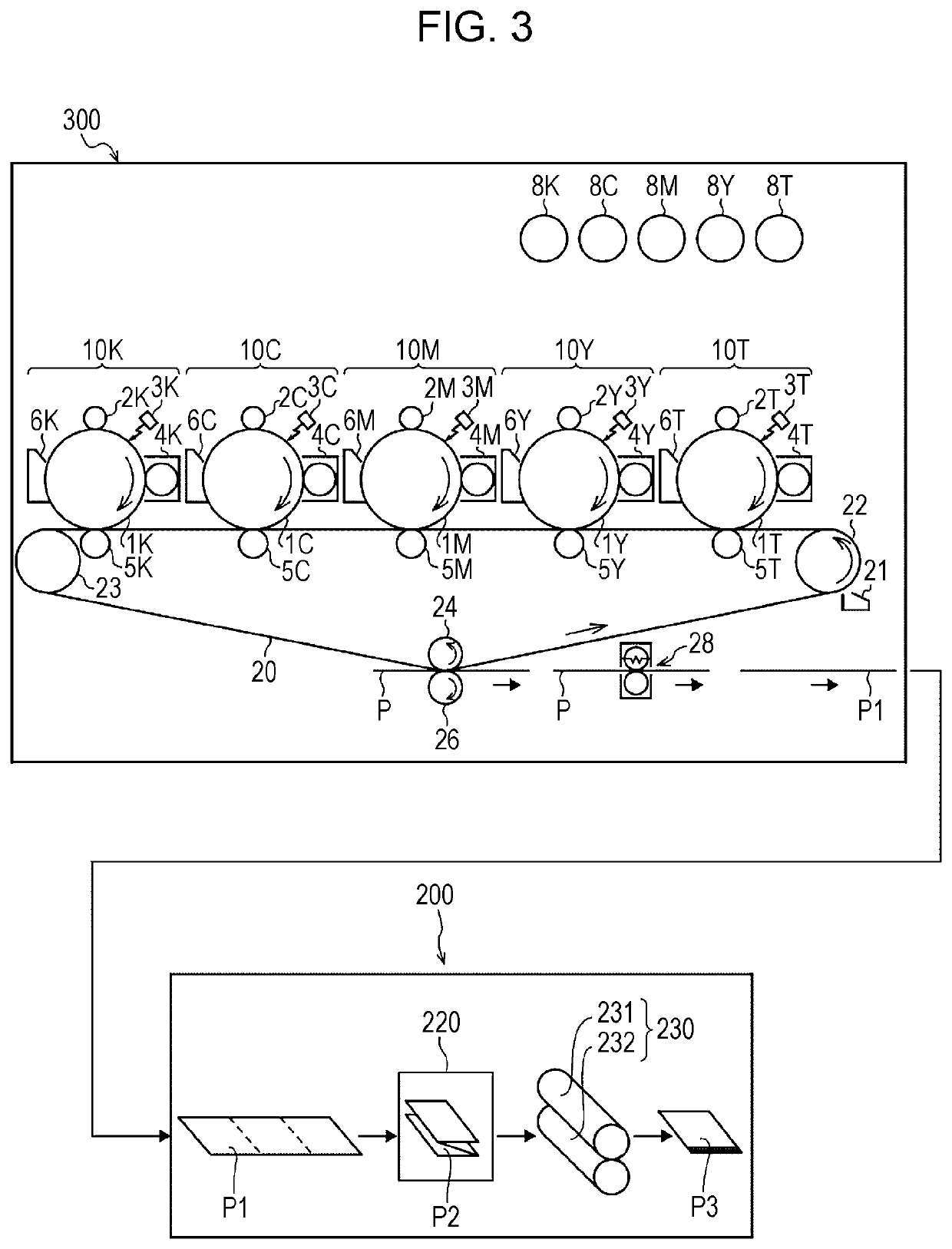Method for producing pressure-responsive particles, method for producing printed material, method for producing sheet for producing printed material, and pressure-responsive particles
- Summary
- Abstract
- Description
- Claims
- Application Information
AI Technical Summary
Benefits of technology
Problems solved by technology
Method used
Image
Examples
example 1
Preparation of Styrene-Based Resin Particle Dispersion St1
[0326]Styrene (St): 370 parts
[0327]n-Butyl acrylate (BA): 115 parts
[0328]Acrylic acid (AA): 15 parts
[0329]Dodecanethiol: 7.5 parts
[0330]The above materials are mixed and dissolved to prepare a monomer solution.
[0331]An anionic surfactant (DOWFAX 2A1 available from The Dow Chemical Company) (8 parts) is dissolved in 205 parts of ion exchange water, and the monomer solution is added to the resulting solution and dispersed to form an emulsion.
[0332]The anionic surfactant (2.2 parts) is dissolved in 462 parts of ion exchange water, and the resulting solution is placed in a flask for polymerization equipped with a stirrer, a thermometer, a reflux condenser, and a nitrogen gas inlet tube. The solution is heated to 73° C. under stirring and held at this temperature.
[0333]Ammonium persulfate (3 parts) is dissolved in 21 parts of ion exchange water, and the resulting solution is added dropwise to the flask for polymerization through a...
examples 2 to 5
Preparation of Composite Resin Particle Dispersions SM2 to SM5
[0345]Composite resin particle dispersions SM2 to SM5 are prepared in the same manner as in the preparation of the composite resin particle dispersion SM1 except that the acrylic acid monomers are changed to the compositions shown in Table 1.
[0346]Pressure-responsive particles (EA2 to EA5) are prepared in the same manner as that in Example 1 except that the composite resin particle dispersions SM2 to SM5 are used instead of the composite resin particle dispersion SM1.
examples 6 to 9
Preparation of Styrene-Based Resin Particle Dispersions St2 to St5
[0347]Styrene-based resin particle dispersions St2 to St5 are prepared in the same manner as that for the styrene-based resin particle dispersion St1 except that the styrenic monomers are changed to the compositions shown in Table 1.
Preparation of Composite Resin Particle Dispersions SM6 to SM9
[0348]Composite resin particle dispersions SM6 to SM9 are prepared in the same manner as that for the composite resin particle dispersion SM1 except that the styrene-based resin particle dispersions St2 to St5 are used instead of the styrene-based resin particle dispersion St1.
[0349]Pressure-responsive particles (EA6 to EA9) are produced in the same manner as that in Example 1 except that the composite resin particle dispersions SM6 to SM9 are used instead of the composite resin particle dispersion SM1.
PUM
| Property | Measurement | Unit |
|---|---|---|
| Temperature | aaaaa | aaaaa |
| Percent by mass | aaaaa | aaaaa |
| Percent by mass | aaaaa | aaaaa |
Abstract
Description
Claims
Application Information
 Login to View More
Login to View More - R&D
- Intellectual Property
- Life Sciences
- Materials
- Tech Scout
- Unparalleled Data Quality
- Higher Quality Content
- 60% Fewer Hallucinations
Browse by: Latest US Patents, China's latest patents, Technical Efficacy Thesaurus, Application Domain, Technology Topic, Popular Technical Reports.
© 2025 PatSnap. All rights reserved.Legal|Privacy policy|Modern Slavery Act Transparency Statement|Sitemap|About US| Contact US: help@patsnap.com



